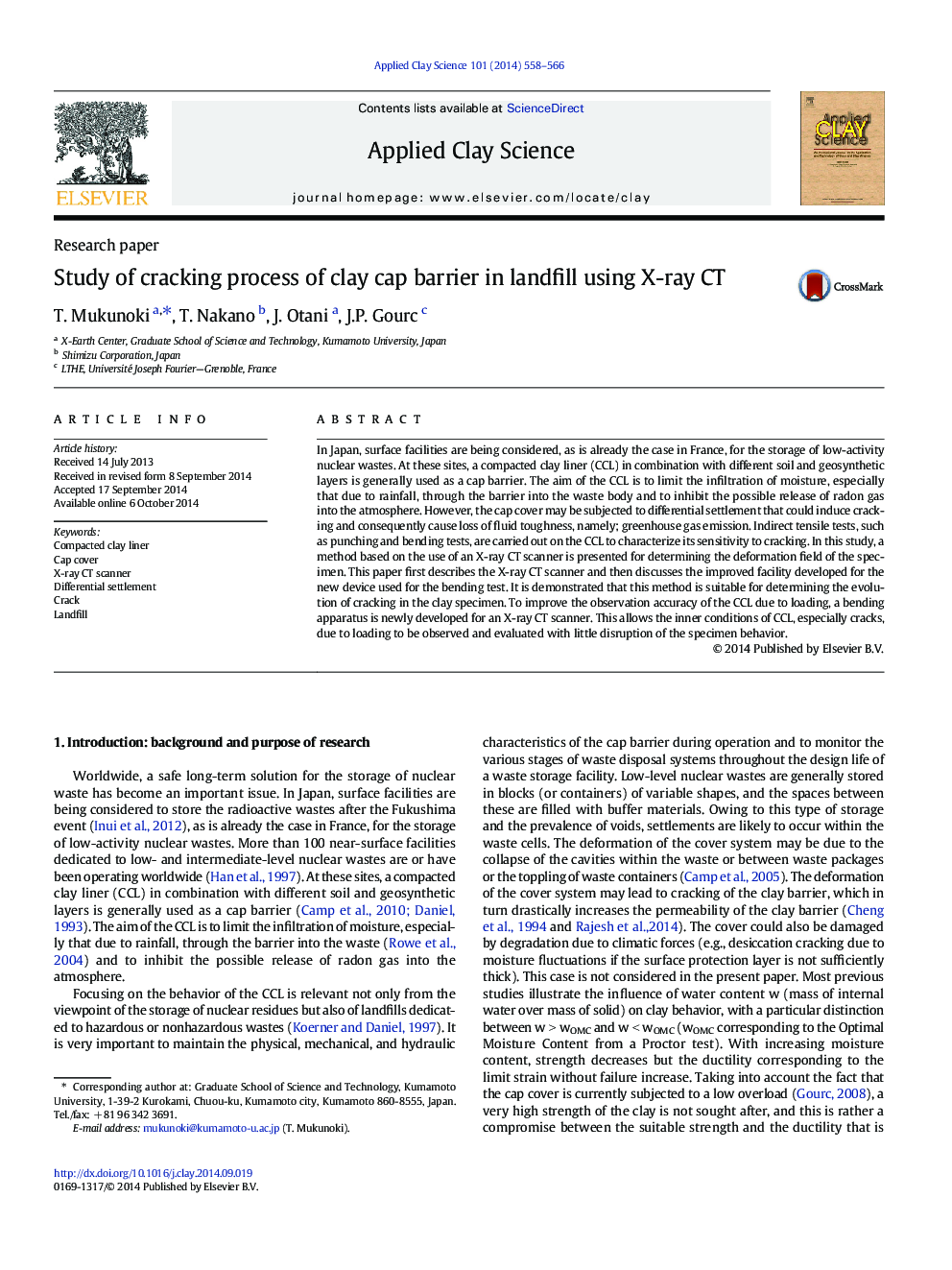| Article ID | Journal | Published Year | Pages | File Type |
|---|---|---|---|---|
| 8046983 | Applied Clay Science | 2014 | 9 Pages |
Abstract
In Japan, surface facilities are being considered, as is already the case in France, for the storage of low-activity nuclear wastes. At these sites, a compacted clay liner (CCL) in combination with different soil and geosynthetic layers is generally used as a cap barrier. The aim of the CCL is to limit the infiltration of moisture, especially that due to rainfall, through the barrier into the waste body and to inhibit the possible release of radon gas into the atmosphere. However, the cap cover may be subjected to differential settlement that could induce cracking and consequently cause loss of fluid toughness, namely; greenhouse gas emission. Indirect tensile tests, such as punching and bending tests, are carried out on the CCL to characterize its sensitivity to cracking. In this study, a method based on the use of an X-ray CT scanner is presented for determining the deformation field of the specimen. This paper first describes the X-ray CT scanner and then discusses the improved facility developed for the new device used for the bending test. It is demonstrated that this method is suitable for determining the evolution of cracking in the clay specimen. To improve the observation accuracy of the CCL due to loading, a bending apparatus is newly developed for an X-ray CT scanner. This allows the inner conditions of CCL, especially cracks, due to loading to be observed and evaluated with little disruption of the specimen behavior.
Related Topics
Physical Sciences and Engineering
Earth and Planetary Sciences
Geochemistry and Petrology
Authors
T. Mukunoki, T. Nakano, J. Otani, J.P. Gourc,
